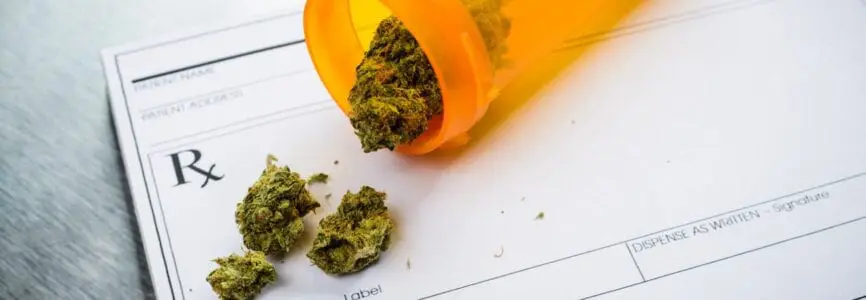Bioethics Forum Essay
Removing the Stigma from “Stigmatopin” to Help Curb Opioid Dependence
The magnitude of the opioid epidemic is increasing across North America, stretching its harmful reach across socioeconomic borders. Drug overdoses are currently the number one killer of Americans under the age of 50. Reports suggest that in the next decade the opioid epidemic could kill more people than prostate and breast cancer combined. With such pervasive and destructive ramifications, policymakers and governments are struggling to find appropriate interventions to deal with the issue. Reactive measures are the most commonly used interventions, with methadone maintenance therapy remaining the standard of care for more than 30 years. The status quo isn’t working.
However, there is a drug that could make a difference, a drug that’s been used medicinally for pain management since 2737 BC.
Recent studies have found that stigmatopin –my term for medical marijuana– when substituted for prescription opiates, can prevent the development of tolerance, aid in withdrawal, and help reduce the quantity of opiates needed for pain management. Other studies have found that states that allow stigmatopin as a therapeutic option have seen a 25% decrease in opioid overdose deaths and a 15-35% decrease in substance abuse admissions. Unlike other treatments options, stigmatopin does not create a physiological dependence and is inexpensive to manufacture. A study in Health Affairs found cost savings of more than $165 million in prescription drug spending when stigmatopin was made available. The American Medical Association, National Academy of Sciences Institute of Medicine, American Public Health Association, and an extensive list of renowned medical associations support its potential use in pain management.
While studies around the world show therapeutic benefits of marijuana – and many countries and U.S. states permit its use medically – clinicians remain reluctant to recommend it to their patients. This is in large part because of the persistent stigma surrounding marijuana. It is also due to its status as a Schedule 1 narcotic, along with drugs such as heroin and LSD. Schedule 1 drugs are substances that have no accepted medical use, are not considered safe, and have a high potential for abuse. While marijuana has historically been considered a highly abused substance, the evidence is now pointing to a multitude of medical benefits. Bipartisan legislation has been introduced to change marijuana from Schedule 1 to Schedule 3. Schedule 3 substances have less potential for abuse than Schedule 1 or Schedule 2 substances, which include cocaine, fentanyl, and other opiates.
The legal prohibition against recreational marijuana has also had negative repercussions on the public’s perception of marijuana’s potential in the medical realm. This stigma has seriously restricted researchers’ access to marijuana for clinical trials and other valuable and necessary research. One physician waited more than seven years to get a license to begin research looking at marijuana as a tool to decrease opioid dependence.
Political opposition to legalizing marijuana for medical and recreational use, a lack of funding for research on the drug’s potential, and pushback from large pharmaceutical companies all play a role in impeding access to marijuana for pain management. U.S. Attorney General Jeff Sessions has publicly doubted marijuana’s potential effectiveness in helping to fight opioid addiction. His anti-marijuana stance has been questioned by physicians and researchers who see the benefits that marijuana could provide for highly addictive opiates.
In addition, many researchers who speak out against medical marijuana have financial ties to large pharmaceutical companies such as Pfizer and Purdue. Purdue is the manufacturer of OxyContin, a drug that played a dominant role in the current opioid epidemic. It comes as no surprise that companies with drugs that could be replaced by medical marijuana have financial interests in impeding research on and prescriptions of it.
However, attitudes may be changing. The Connecticut Hospice is researching marijuana as a means to reduce opiate use for those in palliative care, with similar research occurring in Canada. Further, anecdotal evidence suggests that medical marijuana is becoming a preferred method of treatment for many veterans wishing to decrease or stop their opiate regimen. Clinical studies are under way in Colorado and Canada to determine the role that marijuana can play in veterans’ health, including a possible benefit in treating post-traumatic stress disorder. Patients want access, and these studies may be the key to unlocking it. A team from University of California, Berkeley reported that 93% of patients said that they decreased their use of opioids when they also used medical marijuana. These numbers show the need for governments to get on the same page as patients – especially with 142 Americans dying from drug overdoses each day.
Chelsea Cox is a candidate for a JD and a Master of Health Administration at Dalhousie University’s Schulich School of Law in Halifax, Nova Scotia. Follow her on Twitter, @chelseaecox.













